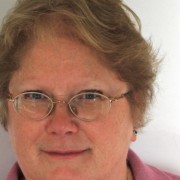Wendy Schultz earned a Masters and a PhD in Alternative Futures (Political Science) from the University of Hawai’i at Manoa (Honolulu, Hawai’i, USA), and was a Research Associate at the Hawai’i Research Center for Futures Studies. She is the Director of Infinite Futures, a consultancy specializing in futures studies and foresight research and training. She also serves as the Vice-President of Training for Vision Foresight Strategy LLC; as Emergentista for LASA Development, which focuses on leadership and organizational renewal; and is a Principal of SAMI Consulting, known for scenario planning. As visiting faculty, she has taught graduate futures seminars at the University of Houston (USA); at the Turku School of Economics (Finland); and at Nanyang Technological University (Singapore). She is a member of the Association of Professional Futurists, and a Fellow of both the World Futures Studies Federation and of the Royal Society for the Encouragement of Arts, Manufactures, and Commerce.
Course Description I
Critical Journeys in Time, Space, and Change
Understanding and exploring how change might create alternative possible futures begins with understanding and exploring how change did create our histories. Tipping points of change – also known as ‘strategic moments’ – create watersheds in history, altering the trajectory of social, economic, political, and other systems. How can we learn to identify critical strategic moments? Examples will be drawn from both academic explorations (Niall Ferguson ed., Virtual History: Alternatives and Counterfactuals) and speculative fiction (Kim Stanley Robinson, The Years of Rice and Salt). Three components contribute to the skill of identifying strategic moments: theories and patterns of social change (Galtung and Inayatullah, eds., Macrohistory and Macrohistorians); concepts from chaos and complexity; and methods including the use of timelines, technology roadmapping, and the Three Horizons Framework (Curry and Hodgson, 2008). We will practice identifying which shifts are important in terms of generating transformational change, and which are not – and create some ‘counterfactual histories’ of our own.
Having analyzed patterns of historical change, we will then explore examples of ‘future histories’ embedded not only science fiction (eg, Stross, Accelerando, and Robinson, 2312) and utopian/dystopian writing (eg, Callenbach, Ecotopia, and Huxley, Brave New World), but also in forecasts and scenarios. What ‘strategic moments’ create the futures these authors and analysts describe? Just as histories offer us useful patterns of change with which to build futures, how do science fiction, speculative fiction, and utopian writing offer us another facet of ‘futures fluency’? What can we learn from authors and analysts that will assist writing our own counterfactual future histories? This course completes with a workshop in writing future histories using the basic building blocks of timelines, systems thinking, and strategic moments.
Course Description II
Foresight in Use: Theory, Practice, and Lessons Learned
A foundation assumption of futures studies and foresight is that the future is not singular, but plural: from moment to moment, we face evolving possible futures. Amplifying people’s ability to imagine alternative outcomes is thus a foundation skill of foresight. Over two dozen methods exist for building alternative futures, or scenarios. Those methods may be loosely grouped into 1) techniques based on narrative analysis; 2) techniques based on axes of change; 3) techniques based on connectors and interconnections among changes; and 4) techniques based on tables and tabular organization of changes. This course will inventory the scenario tools available to practitioners, and assess their different resource requirements, strengths and weaknesses. Interactive experience with the various scenario methods will help participants assess their own preferred techniques. Case studies of the various approaches will explore the advantages and disadvantages of each. The class will create an annotated scenario-building guide based on lessons learned from an international selection of projects and the instructor’s own experience, as well as from short interviews that students will complete with futures researchers and foresight experts around the world. This toolkit will assist students in judging what methods might work best in their subsequent endeavours as futures researchers.






